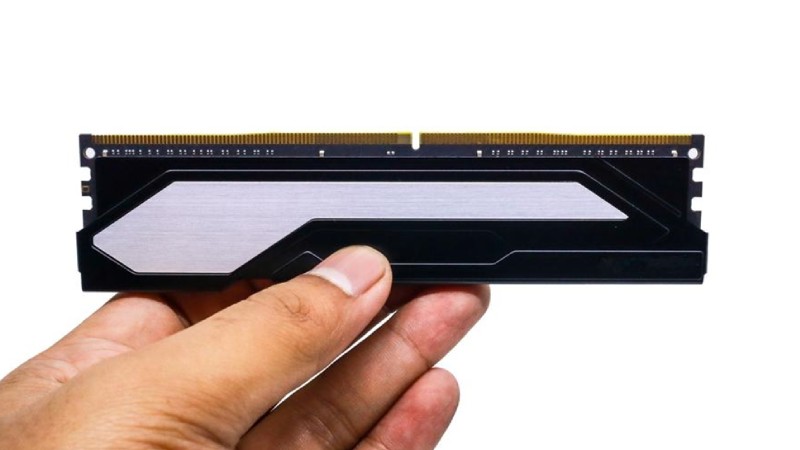If you’ve ever been frustrated with lagging applications, slow boot times, or unexpected system crashes, you might be dealing with inadequate RAM. In today’s digital age, having enough computer RAM is essential for running applications smoothly and efficiently. This guide aims to help PC gamers, tech enthusiasts, graphic artists, content creators, and other power users identify when it’s time to upgrade their RAM for optimal performance.
Table of Contents
1) Frequent Freezing or Crashing
- Problem: Frequent system freezes or crashes can indicate that your computer is running low on RAM, especially when you have multiple programs open simultaneously.
- Explanation: RAM temporarily stores active data that your system needs to access quickly. When you run out of RAM, your computer struggles to manage tasks, leading to frequent freezing or crashing.
- Example: Imagine you’re a video editor working on a high-resolution project in Adobe Premiere Pro. Suddenly, your system crashes, causing you to lose hours of work. This is a classic sign that you need more RAM to handle such memory-intensive tasks.
2) Slow Response Times
- Problem: Delayed response times when opening applications or files can signal inadequate RAM.
- Explanation: Insufficient RAM forces your computer to rely on the slower hard drive for temporary storage, resulting in noticeable slowdowns.
- Example: A software developer notices significant lag when switching between multiple open browser tabs and integrated development environments. This lag clearly indicates that more RAM is needed for smoother multitasking.
3) Frequent Disk Usage Spikes
- Problem: Constant high disk usage during simple tasks can indicate a lack of RAM.
- Explanation: When RAM is full, the system uses the hard drive as virtual memory, causing frequent disk usage spikes. It’s essential to understand what VRAM is, as it plays a critical role in handling graphics-intensive tasks, reducing strain on your system’s RAM. The system uses the hard drive as virtual memory when RAM is insufficient to temporarily store data and processes, which helps to handle tasks but significantly slows down performance due to the slower read/write speeds of hard drives compared to RAM.
- Example: Consider a gamer trying to play the latest AAA title while also running a streaming application in the background. If they notice their game stutter and the disk activity light flicker excessively, it’s a clear sign that their current RAM capacity is insufficient to handle their gaming and streaming needs simultaneously.

4) Lag in Gaming or Graphic-Intensive Applications
- Problem: Gamers and graphic designers might experience lag or stuttering during gameplay or while using design software.
- Explanation: These applications require significant amounts of RAM to efficiently load textures, assets, and large files. Lag and stuttering in gaming or graphic-intensive applications can manifest as intermittent delays where actions are not immediately registered, causing a choppy or inconsistent frame rate that interrupts the smooth flow of gameplay or design work.
- Example: During an intense firefight in a first-person shooter, a gamer suddenly experiences a noticeable drop in frame rates, causing their character to lag behind in reacting to on-screen events. As a result, the player misses critical shots and can’t properly navigate the environment, leading to frustration and losing the match. Determining how much RAM for gaming is optimal can prevent such performance issues, ensuring a smoother and more responsive experience during gameplay.
5) Inability to Run Multiple Applications Simultaneously
- Problem: Applications may become unresponsive or crash when attempting to multitask.
- Explanation: Multitasking requires more RAM, and running out of it forces the system to use slower storage solutions, leading to performance degradation.
- Example: Picture a data scientist immersed in intricate datasets, striving to run a powerful analytical program alongside their favorite browser and a resource-heavy virtual machine. As they switch between tasks, the applications freeze and crash, hindering their ability to glean insights or draft reports, all due to a frustrating lack of RAM.
6) Slow Boot and Shutdown Times
- Problem: Extended boot or shutdown times may suggest a RAM bottleneck.
- Explanation: A RAM bottleneck occurs when the memory capacity of a computer is insufficient to efficiently handle the demands of running applications and processes simultaneously, leading to slow performance and system delays. During boot and shutdown, the system loads and unloads a significant amount of data into and out of RAM. Insufficient RAM can slow these processes.
- Example: Imagine a user trying to kickstart their day, eagerly anticipating to hop online for an important video conference. Instead, they find themselves staring at a swirling loading icon for what feels like an eternity, turning their morning routine into a frustrating battle against an agonizingly slow boot process.
7) Frequent ‘Out of Memory’ Errors
- Problem: Frequent “Out of Memory” warnings or errors can be a clear sign of insufficient RAM.
- Explanation: When the system runs out of available RAM, it triggers these errors as it cannot allocate more memory to applications.
- Example: A graphic designer diligently working on a high-resolution project notices frequent “Out of Memory” errors while attempting to export their work. They decide to monitor their memory usage through system performance tools, revealing that their RAM is consistently maxed out, prompting them to consider an upgrade for smoother operation.
8) Browser Tabs Reloading Frequently
- Problem: Browser tabs constantly reloading or crashing, especially with multiple tabs open, can indicate insufficient RAM.
- Explanation: Modern web browsers consume a lot of RAM, especially when using web-based apps. When the system runs out of RAM, it forces tabs to reload to free up memory.
- Example: A graphic designer juggling several projects simultaneously might find the frustration mounting as their web browser reloads tabs mid-design, causing them to lose information, progress, and disrupting their creative flow. In the heat of a deadline, this constant reloading hampers productivity and amplifies the stress of meeting client expectations.
9) Applications Not Responding or Closing Unexpectedly
- Problem: Applications becoming unresponsive or closing without warning can indicate insufficient RAM.
- Explanation: When the system runs out of RAM, it may forcefully close applications to prevent a complete crash.
- Example: Imagine a film editor meticulously piecing together a cinematic masterpiece, only to have their editing software suddenly crash mid-project due to insufficient RAM. Frustration boils over as they lose precious progress on intricate edits, all because the system faltered under the weight of demanding applications.
10) Visual and Audio Glitches During Media Playback
- Problem: Audio stuttering or video playback glitches during media consumption can occur with insufficient RAM.
- Explanation: Media players require RAM to buffer content, and when RAM is low, it can cause interruptions.
- Example: A graphic designer frantically working against a looming deadline finds their creative flow stifled as their media player starts skipping and stuttering, mirroring their rising panic. With every glitch, they risk losing inspiration for their project, trapped in a frustrating loop of buffering while trying to perfect their latest masterpiece.

Wrapping Up: Overcoming RAM Challenges for Peak Performance
Recognizing the signs that your computer needs more RAM is essential for maintaining optimal performance. If you experience frequent freezing, slow response times, high disk usage, or any of the other issues mentioned above, it might be time to troubleshoot.
- Restart your computer: Restarting clears temporary data and stops background processes, freeing up RAM.
- Close unnecessary applications: Quit apps you’re not actively using to free up memory.
- Clear your browser cache: As mentioned, browsers can consume significant RAM. Clearing the cache can help.
- Disable startup programs: Prevent unnecessary apps from automatically launching at startup.
- Use Task Manager to identify and end memory-hogging processes: Use Task Manager to look for apps or processes using excessive RAM and close them if not needed.
- Update your software and drivers: Outdated software can cause memory leaks. Keep everything up to date.
- Try a different web browser: Some browsers are more RAM-efficient than others. Consider switching if your current browser is a heavy RAM user.
- Uninstall unused programs and browser extensions: Remove software and extensions you don’t use to free up resources.
- Scan for malware: Malware can consume RAM. Run a scan using Windows Defender or another antivirus program.
- Adjust virtual memory settings: If you’re low on physical RAM, increasing virtual memory can help.
If these steps don’t sufficiently improve your RAM situation, consider upgrading your physical RAM. This is especially beneficial if you frequently run memory-intensive applications or multitask heavily. Upgrading RAM is a cost-effective way to enhance your computer’s efficiency, ensuring smoother operation across various tasks.
